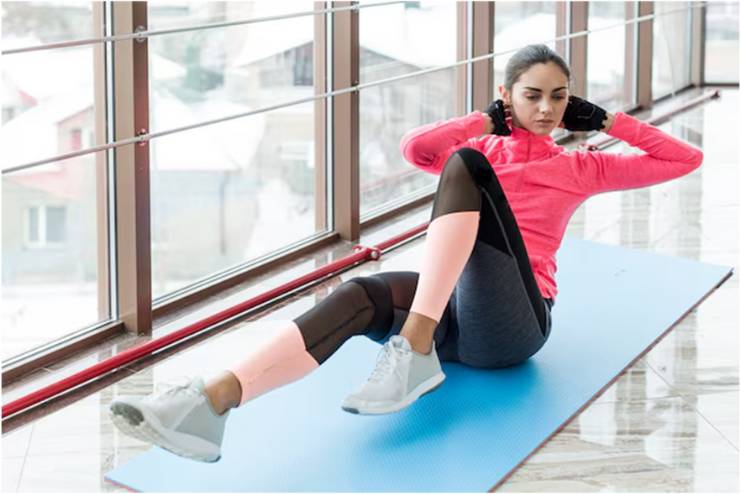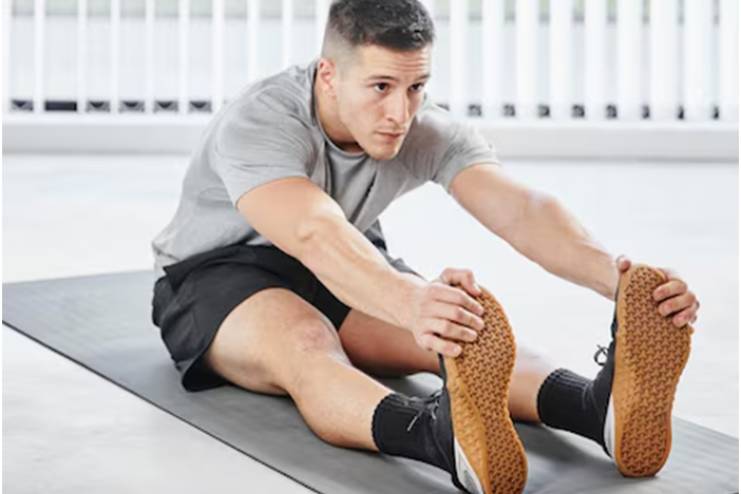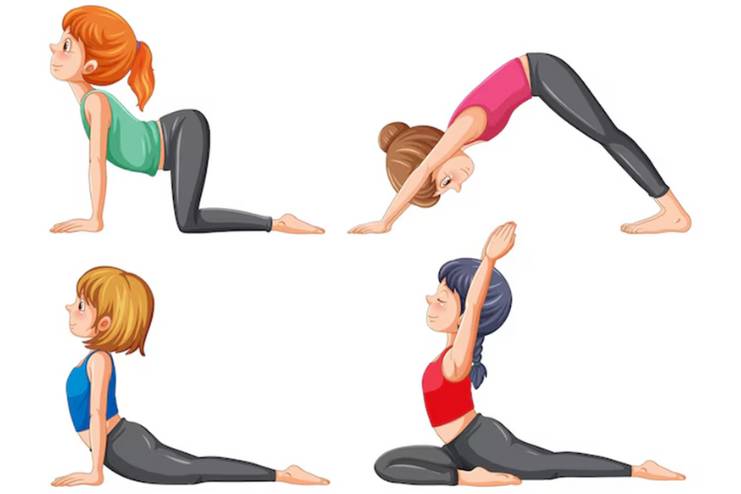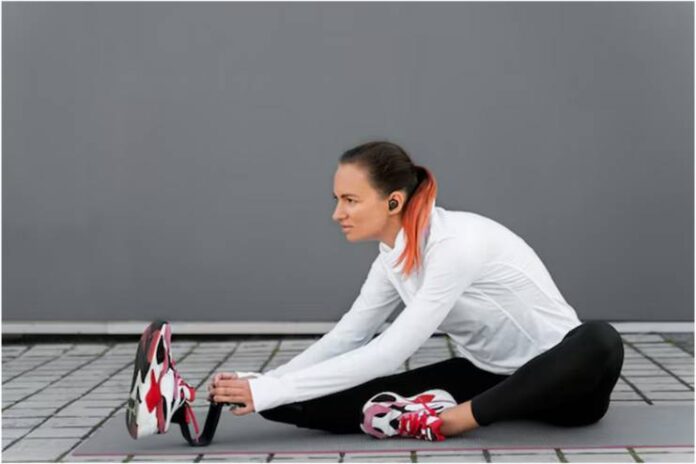Affiliate Disclaimer
Some links in this article are affiliate links. We may earn a small commission if you make a purchase through these links, at no extra cost to you. We only recommend products we find useful to our readersThe importance of stretching in workouts can never be stressed less. Take any fitness regime of an athlete or a regular fitness freak, and you’ll find stretching to be a primary warm-up before a workout or post-workout. Not just for athletes, stretching has always been an important part of a fitness regimen for people looking to improve their mobility.
There are two different types of stretching usually practiced by many. These are dynamic and static stretching. Since both are distinct, we must know and understand when to use dynamic vs static stretching. Making the right choice can make a lot of difference.
According to Dr. Anne Rex of the Cleveland Clinic, people have taken to stretching more often in the past decade. She stresses the fact that the right kind of stretching will help you gain maximum benefits.
In this article, let us understand the types of stretching: dynamic stretching and static stretching, the benefits of dynamic vs. static stretching, and how you can include stretching routines in workouts. We’ll also understand when to use dynamic stretching as well as static stretching.
What Is Dynamic Stretching?

Dynamic stretching involves your muscles in a full range of motion with controlled and deliberate movements. Dynamic stretching can be considered more fluid as compared to static stretching. People may opt for leg swings, and walking lunges as common dynamic stretching exercises to warm up before a workout. These help your body to get ready for the activity ahead by promoting blood flow, improving joint mobility, and warming up muscles.
Benefits of Dynamic Stretching:
- Warm-Up Effect: Warm-up stretches before exercise are extremely important. And dynamic stretching is a perfect choice for the same. It helps in raising your body temperature and helps in blood flow.
- Improved Range of Motion: Moving your joints and muscles in a full range of motion, improves your flexibility as well as mobility.
- Injury Prevention: You are prone to injuries while working out, but preventing them is not a challenge. With dynamic stretching, you benefit your joints, particularly the ones that you use in physical activity. These are a good pre-workout for more strenuous movements.
When to Use Dynamic Stretching:
Dynamic stretching is extremely beneficial if done before a workout. Especially for workouts with high intensity including lifting weights, sprints or runs, or sports. These help in the activation of key muscle groups, and aid in mobility and flexibility, making them perfect for morning routines.
If you’re focusing on an intense workout or sport-specific movements, dynamic stretches are key to reducing the risk of injury and boosting performance. These types of warm-up exercises before a workout are better for any activity that requires muscle engagement right from the start.
Additionally, Harvard Health emphasizes that dynamic stretches can improve athletic performance and flexibility.
What Is Static Stretching?

Static stretching for flexibility, unlike dynamic stretching, holds a stretch for a longer time. These stretches typically range from 15-60 seconds. You can engage in static stretching by reaching for your toes, forward bends, or a quadriceps stretch.
Static stretching involves strengthening and relaxing the muscles. This is an excellent way to improve flexibility.
Benefits of Static Stretching:
- Increased Flexibility: Static stretching benefits include building muscle flexibility over time. You hold the static stretches for a long, which makes your muscles elongate and contributes to flexibility.
- Muscle Relaxation: If you wish to relax muscles after an intense workout, static stretching must be your go-to option. These not only help muscles relax but also help them return to their resting length.
- Post-Workout Recovery: Another benefit of static stretching is that it promotes recovery after an intense workout, reduces muscle tightness, and improves muscle strength.
When to Use Static Stretching:
The ideal way and time to include static stretching in your workout is to include it in post-workout. This is when the muscles are already warmed up. The muscles need to warm up before exercise as stretching cold muscles leads to injury. You can include static stretching in your night fitness routine to prevent muscle stiffness.
Key Differences Between Dynamic and Static Stretching
It is important to understand dynamic vs static stretching. This can help you decide the right method for your desired results. Here are a few differences between dynamic and static stretching:
- Mobility vs. Flexibility:: Dynamic stretching focuses more on increasing mobility, and prepares muscles for strenuous activity. Whereas, static stretches aim for overall muscle flexibility over time.
- Effects on Performance: Athletic performance is highly impacted by dynamic stretching as it activates muscle activation and range of motion. Static stretching, though good for flexibility, may reduce muscle power for a short time, if done before a workout.
- Injury Prevention: Although both types of stretching help prevent injuries, dynamic stretching is better in this aspect. Dynamic stretching helps prepare joints for activity whereas static stretching helps in relaxing stiff muscles.
Common Myths About Stretching

We come across some common myths about stretching all the time. Here’s how we debunk those:
- Static Stretching Is Best for Warm-Ups: It is a common belief that doing static stretches before a workout helps reduce muscle performance and strength temporarily. However, this claim isn’t entirely true. When it comes to dynamic stretching, these are the most effective warm-ups to activate the muscles and prepare your body for activity.
- Stretching Prevents Injury: As mentioned earlier, though stretching can help reduce the likelihood of injuries, it doesn’t guarantee an injury-free experience. It simply improves your flexibility and mobility. And, it is essential to stretch properly and avoid overstretching the cold muscles. You must have a well-rounded injury prevention regimen that involves proper conditioning too apart from strength training.
Building the Perfect Stretching Routine
For optimum results, stretching must be paired with a balanced routine that includes both dynamic and static stretching. Here’s how you can make the most of it and tailor the regimen based on your activity.
- For Running or Cardio Workouts: Opt for workouts based on your activity for the day. For example, begin your day with leg swings, walking lunges, or hip circles. These help in activating the muscles necessary for running. You can follow these up with hamstring stretches, and quadriceps, which are static stretches.
- For Strength Training: Warm up for exercises with dynamic stretching that include shoulder circles or arm swings. This will help you warm up your upper body. You can follow up with lunges for the lower body. Post workout you can do some static stretching targeting your glutes, and hamstrings. This will help you relax after an intense workout.
- For Flexibility Goals: Make static stretches a primary activity in your routine, if you wish to gain flexibility. However, don’t forget to include dynamic stretches that help prepare your body for deeper stretches during your session.
Mistakes to Avoid
To get the most benefits out of your stretching routine, avoid these common mistakes:
- Overstretching Cold Muscles: Do not perform static stretches until your muscles are warmed up. This leads to muscle tears and strains. The pro tip here is to do dynamic stretching first and prepare your muscles for the intense workout.
- Rushing Through Dynamic Stretches: Do not hurry. Dynamic stretches should be controlled and deliberate. Avoid rushing, and take your own time and pace to get the most benefits.
- Holding Static Stretches Too Briefly: To effectively lengthen the muscles, static stretches need to be held for at least 15 seconds. Brief holds won’t provide the same benefits for flexibility.
Conclusion:
We need to understand the ideal time to perform dynamic vs. static stretching. Including the right kind of stretch at the right time makes a significant difference. These can improve performance, prevent the likelihood of injury, and promote flexibility. Include dynamic stretches before your workout to prepare your muscles, and keep the static stretches for the end of the workout to help in recovery.
Stretching is not only for marathon runners, athletes, or sportspersons. If you wish to maintain flexibility, stretching is a great tool also. Remember to understand your body, listen to the cues, avoid overdoing the stretching, and stay consistent. Choose the right kind of stretching, and your muscles will thank you.
In this Article


















